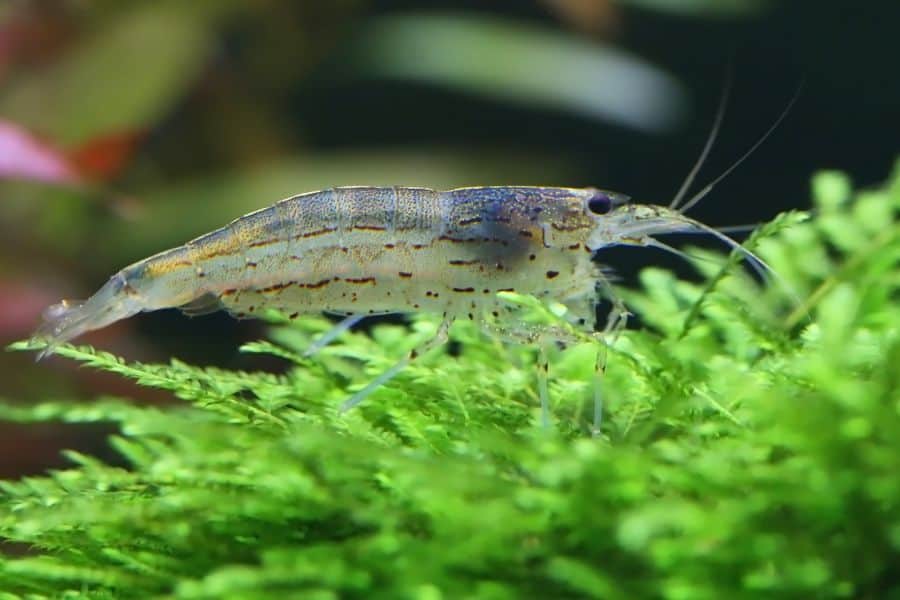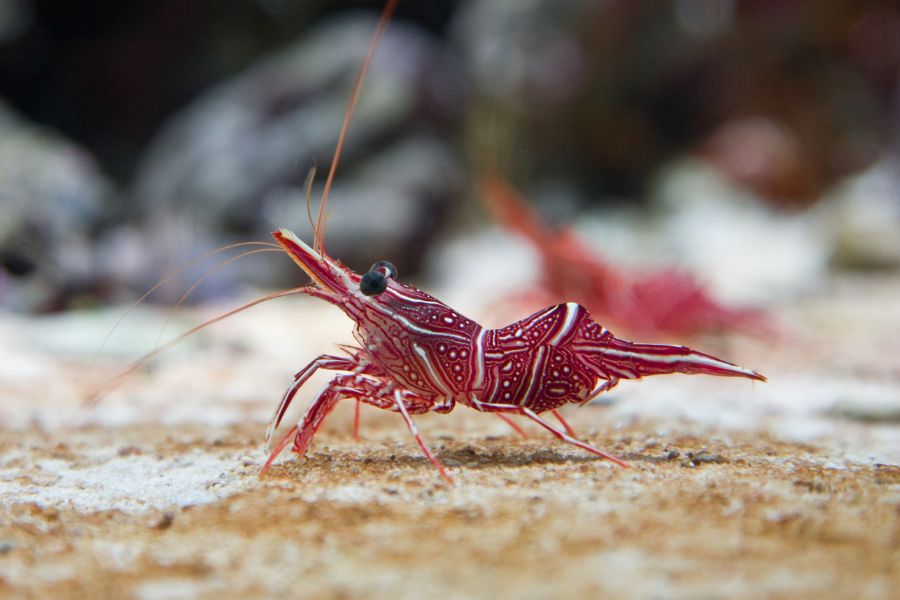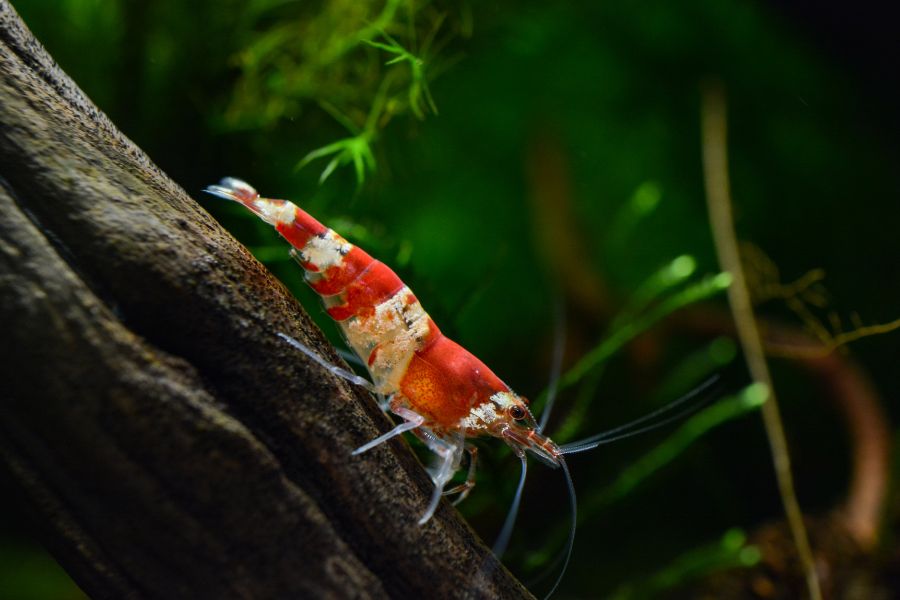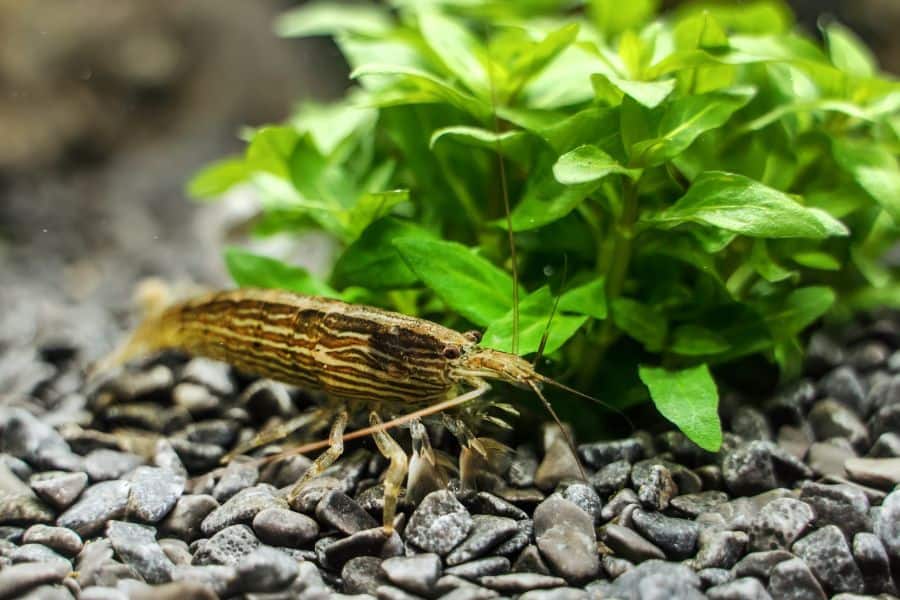Think it’s time to give your Betta fish a tankmate? One of the most popular Betta tankmates is shrimp, and they make a great addition to pretty much any tank.
Luckily, shrimp and betta are a great pairing. They require similar water conditions, making maintaining the tank much easier than trying to accommodate two species with separate needs.
That said, shrimp do have some specific requirements for keeping them happy and healthy – so let’s take a look at what shrimp need and what you can do to make shrimp and betta a great combination.
Basics of Keeping Shrimp with Betta Fish
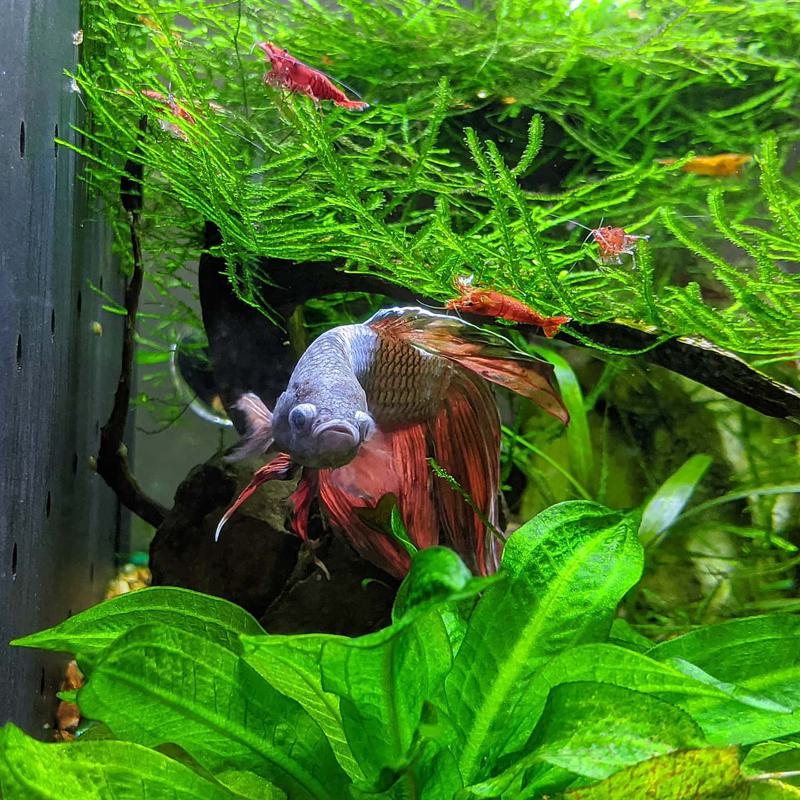
Fortunately for anyone interested in keeping shrimp with Betta fish, shrimp are a relatively low-maintenance pet.
They require a healthy, clean environment and the right food in order to stay happy and healthy — but that’s about it.
They have similar requirements to Betta fish, so you should be able to set up the shrimp’s environment easily.
- Tank size. Shrimp need at least 10 gallons of water to live in, but if you’re thinking of putting them in with Betta fish, 15-20 gallons is ideal.
- The ideal temperature for shrimp is between 20-24°C (68-75°F). This is still within the range that Betta fish can tolerate.
- pH level. Shrimp do best in slightly acidic water with a pH level of 6.5-7.0, which is also the ideal pH for Betta fish.
- Water quality and filtration. It’s essential that shrimp live in clean water, as they are sensitive to pollutants and toxins. A filter is necessary for keeping the shrimp happy, healthy, and free of parasites.
- Shrimp can be kept in a variety of tank substrates, but they need something that won’t damage their delicate bodies when they burrow and shrimp. For this reason, sand or very fine gravel, which most Betta tanks already have, is the best choice.
- Shrimp can be fed a variety of shrimp-specific foods, as well as fresh vegetables and algae. They will also eat any uneaten fish food in the tank.
As you can see, it’s obvious at first glance that Betta fish can co-exist happily with shrimp.
However, there are still a few more things you should consider, such as the size of the shrimp and the shrimp species. Knowing which species to pair with bettas not only reduces aggression and injuries but also safeguards against fatalities in your aquarium.
Before Adding Shrimp to a Betta Tank
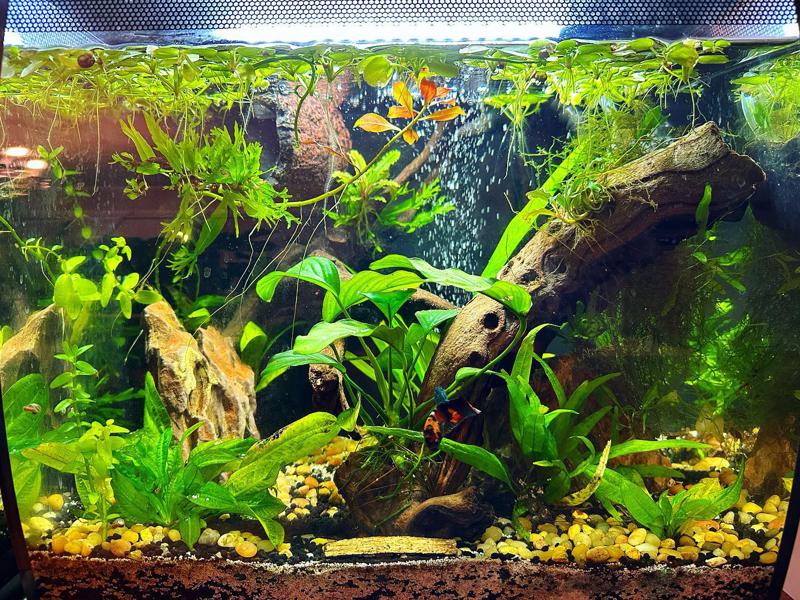
Here are a few things to keep in mind before adding shrimp to a Betta tank.
Shrimp Species
The first thing you should think about is the species of shrimp you want to add.
Many species can be kept in a freshwater aquarium. However, as mentioned above, your priority should be choosing a species that can coexist peacefully with your Betta fish. We’ll discuss here in more detail below.
Shrimp Size
Bettas are territorial and aggressive by nature. As natural predators, they have no qualms about preying on lesser species.
Smaller shrimp are more likely to be injured, killed, or devoured by your betta. Take note that if the shrimp can fit in your betta’s mouth, it will almost certainly become a snack.
Tank Requirements
When purchasing your chosen shrimp species, make sure that their optimal tank parameters overlap with those of your bettas. You should avoid getting a species that will require you to make major alterations to the betta aquarium.
Tank Decorations
Keep in mind that shrimp are very active and timid, so they need plenty of hiding places. Rocks, driftwood, plants, and shrimp-safe decorations can all be used to provide shrimp with a place to hide if they feel threatened or stressed.
This is especially true during molting season, which occurs once a month when they shed their outer skin and grow a new one. Hiding places will allow the shrimp to escape while their shell hardens since they might become anxious at this time.
What Shrimp Can Live With Betta?
This section provides a quick overview of the shrimp species that are often kept with Betta fish. It should be noted that shrimp should be kept in small groups of at least 6-8 to keep them happy.
Cherry Shrimp With Betta
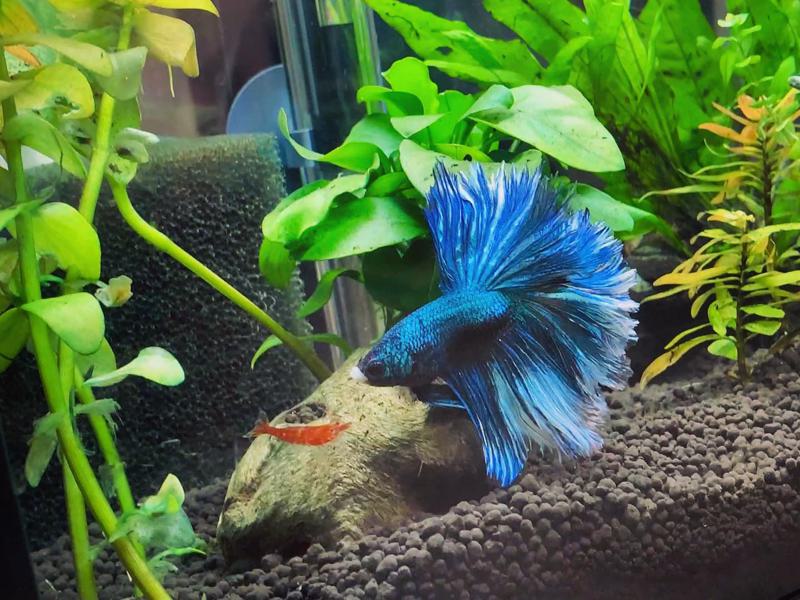
Cherry shrimp (Neocaridina davidi) is a shrimp species native to China and Taiwan but has since been introduced in many other countries. It gets its name from its eye-catching pink hue, although the species may also be found in orange, yellow, green, blue, violet, red, and black.
These fascinating creatures are incredibly hardy, and their peaceful nature makes them perfect for beginner aquarists. They also tend to stay out of the way, and Betta fish are relatively unlikely to see them as prey.
In the wild, cherry shrimps feed on algae or decaying organic matter. In an aquarium, they can be fed commercial food pellets, blanched vegetables, and frozen foods like bloodworms.
Cherry shrimps make great community tank mates for freshwater fish, invertebrates, and plants. They may, however, not be suitable with an aggressive betta fish due to their size. Plus, cherry shrimp tend to have very fast jerky movements, which can trigger aggression from the betta fish.
Fun fact: there are plenty of cherry shrimp variations available on the market. The red cherry shrimp, or RCS, is perhaps the most common and most popular variety. Other variations include the Sakura Red, Red Fire, and Bloody Mary.
Related: How Many Cherry Shrimp Per Gallon?
Ghost Shrimp with Betta
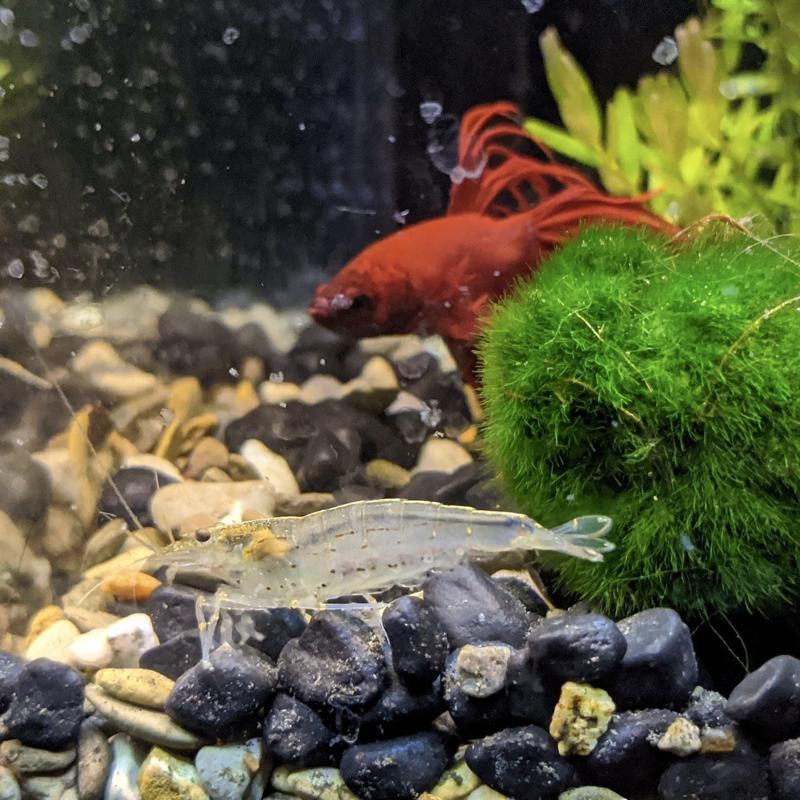
Ghost shrimp (Palaemonetes paludosus), also known as glass shrimp, is a North American miniature shrimp species.
These small ghostly creatures typically prefer still or slow-moving waters and seek oxygen by brushing their antennae against the aquatic vegetation. They’re naturally kind and docile, so you shouldn’t have a problem introducing them into a community tank with bettas.
Ghost shrimp feed on almost everything, including live plants, algae wafers, sinking pellets, and frozen foods. As scavengers, they also feed on small insects and detritus found in aquarium substrate.
One thing to note is that they’re active but move rather slowly. Thanks to their clever camouflage, they’re good at blending into the environment and staying out of sight from predators — like aggressive Bettas.
All in all, ghost shrimp can generally coexist peacefully with Betta fish, but make sure to avoid shrimp that are too small (1cm or less), as these may be seen as food by the betta. Fully grown shrimp can reach 1.5 inches in length, so choose those instead.
Amano Shrimp
Amano shrimp (Caridina multidentata) is a species of freshwater shrimp native to Asia. They’re named after Japanese aquarist Takashi Amano, who’s also known for founding the world-renowned aquascaping brand ADA.
Today, Amano shrimp has become one of the most popular invertebrates for aquarium hobbyists, including Betta fish owners.
Like other shrimp, Amano shrimp have a tendency to congregate in groups as they scavenge through streambeds and agricultural land. Inside the aquarium, they can be counted on to efficiently eliminate debris, consuming everything from uneaten fish food to decaying matter found within the substrate.
Amano shrimp can also coexist peacefully with other tank mates – even betta fish. Just make sure that you add plenty of vegetation because Amano shrimp enjoy hiding in plant cover.
Number Of Shrimps With Betta Per Gallon
In a shrimp-only tank, it’s easy to care for dozens of them, even if you only have 5-10 gallons.
That said, things are a little different in a community tank. As a rule of thumb, you should keep at only 1-2 shrimp per 1 gallon of water. Of course, this still depends on the size of the shrimp — smaller shrimp can be kept in bigger numbers.
One thing to note is that shrimp tend to reproduce inside aquariums. Be careful not to overstock shrimp, as this can lead to overcrowding and stress.
Shrimp To Avoid Adding To A Betta Fish Tank
Now that we’ve gone through some of the best freshwater shrimp species for Betta fish aquariums, let’s have a look at which ones you should probably avoid.
Camel Shrimp
Camel shrimp (Rhynchocinetes uritai), also known as camelback or dancing shrimp, are rather small shrimp, ranging from 1 to 2 inches in length.
They’re mainly found in Asia and Australia, where they inhabit saltwater. It’s due to this reason that they can’t be housed with Bettas. While they’re undeniably beautiful, they can’t survive in freshwater.
If you really want to keep Camel shrimp, consider setting up a shrimp-only saltwater aquarium.
Bee Shrimp
The bee shrimp (Caridina cf. cantonensis) is a shrimp species with several diverse varieties that are popular in the aquarium industry. All of them boast a captivating alternating pattern, with vibrant colored stripes placed between neutral bands along their body.
This species is popular with aquarists because they look beautiful and are extremely active and playful.
Unfortunately, their gorgeous colors make them unsuitable in a Betta tank. Bettas are typically wary of other fish in their territory, especially if it’s brightly colored. With their colors and small sizes, bee shrimp can easily be mistaken as food by the Betta.
Bamboo Shrimp
The bamboo shrimp (Atyopsis spinipes) is a magnificent creature that can provide life and vibrancy to any freshwater aquarium.
They feature a lovely, natural-looking wood-like design that blends well with their environment, hence their name. They have a broader and stockier structure than certain types, which are on the thinner side.
Their wood grain pattern blends with their natural surroundings, hence their name. Body-wise, they have a stockier, wider form than other shrimp species.
Despite their beauty, bamboo shrimp don’t make for good tankmates with Betta fish. They need plenty of algae to thrive, and they also tend to compete with Bettas for food.
Will Bettas Eat Shrimp?
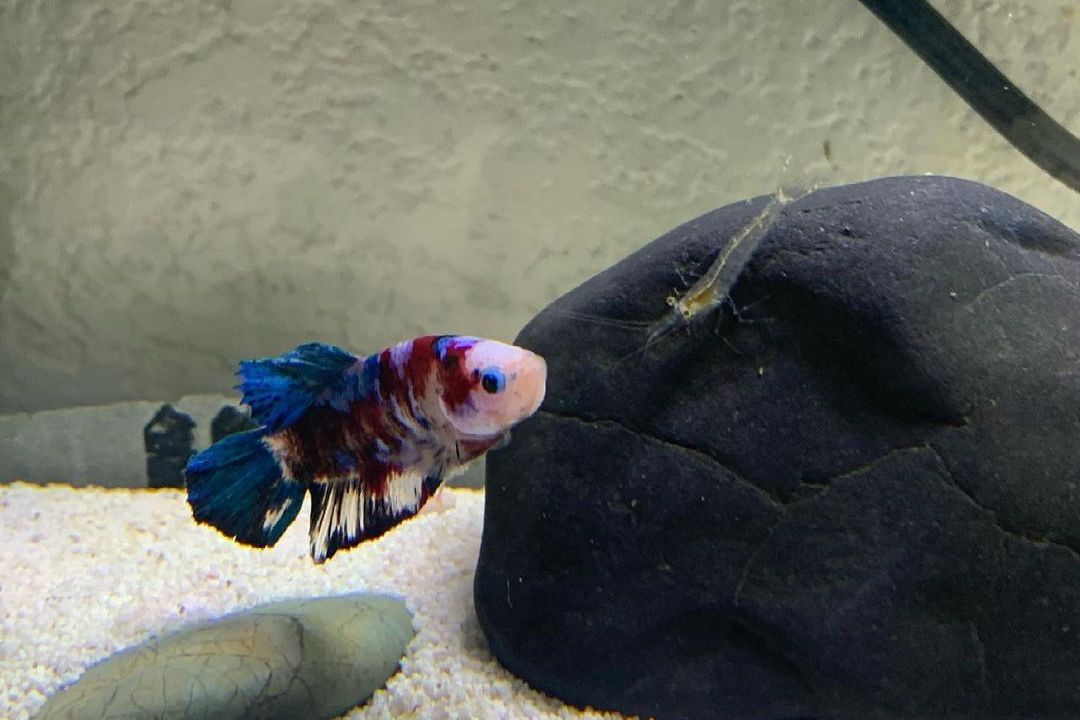
Bettas are carnivorous, which means they usually try to eat any small creature crossing their path. Their digestive system can extract nutrients even from small crustaceans, such as shrimp.
When given the opportunity, hungry Bettas will definitely eat shrimp. However, this doesn’t mean that shrimp and Bettas can’t be kept together in the same tank.
Many Bettas, when fed well and on time, will just ignore shrimp in their tank. This is especially true if you have plenty of hiding places and plants.
Tips to Keep Your Shrimp Safe in Your Betta Tank
Thinking of adding shrimp to your Betta tank? Here are some tips to increase the shrimp’s chances of survival.
Introduce the Shrimp First
Before adding your Betta fish to the tank, you should allow your shrimp to establish themselves in your aquarium first.
Doing so will give the shrimp time to get used to their environment and set up hiding spots in plants or rocks.
Additionally, Bettas are territorial, so if you add them first, they may treat the shrimp like intruders.
Make Sure the Tank Is Large Enough
A large tank means that your Betta and shrimp will have enough space to themselves without feeling overcrowded.
This will help to reduce the likelihood of confrontations between shrimp and Betta.
The ideal size is around 10 gallons, but if you can provide a larger tank, then that’s even better.
Add Plenty of Hiding Spaces
The most important thing you can do is provide plenty of hiding spots for your shrimp.
If you have a planted tank, your best bets are driftwood, rocks, and live plants. These can give your shrimp a safe haven from any predatory behavior from the Betta.
Not just that, but plants and hiding places will make your Betta feel more relaxed too, so they’re less likely to attack tankmates.
Don’t Let Your Betta Get Bored
Bettas are clever little fish and can become bored if they don’t get enough stimulation. When this happens, they may start attacking their shrimp companions.
As long as you provide them with plenty of enrichment activities, they won’t be so inclined to go after shrimp.
Read More:
- Betta Fish Tank Setup: What to Put In?
- Do Betta Fish Eat Other Fish?
- Can Guppies Live With Bettas?
- Can Betta Fish Live with Goldfish?
- Can Snails Live with Bettas?
- Dwarf Freshwater Shrimp
FAQs
Do Shrimp Eat Algae in A Betta Fish Tank?
While shrimp do consume algae, they are not the most efficient. If you want shrimp just to assist in keeping your tank clean, you should opt for a different species, like snails, instead.
Do Shrimp Need Live Plants?
Shrimp will definitely appreciate live plants in an aquarium. Not only will these plants give your little friends a safe place to hide and play, but they can also provide food. Plants can also help maintain water quality by balancing pH levels and oxygenating tanks.
How Often Do You Feed Shrimp?
You don’t need to feed shrimp as often as other fish. Every other day is typically enough. That’s because they scavenge daily, so they can get some nutrition from algae and other food scraps.
How Long Does Shrimp Live?
Shrimp have a lifespan of 1-6 years. The primary factor affecting shrimp lifespan is water quality, so make sure you’re providing your shrimp with clean, oxygen-rich water.
Do Shrimp Need a Filter?
Shrimp are extremely sensitive to ammonia and nitrite, so a filter is absolutely necessary to keep these levels within healthy parameters. A sponge filter works great for shrimp tanks, providing filtration without creating a strong flow.
Conclusion
Shrimp and Bettas can be kept together as long as you follow the tips listed above. Keep in mind that shrimp need a larger tank, plenty of hiding places, and an ammonia-free environment.
Lastly, make sure you keep your Betta entertained and give your shrimp a balanced diet. If you do, then both your shrimp and Betta can live together in peace!
